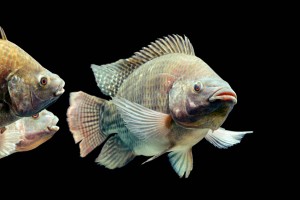Is Aquaponics in City Centers in the Future?
By Colle and Phyllis Davis
According to Food Empowerment Project, Food Deserts in inner-cities make it difficult
for many to source and purchase fresh food.
“Food deserts can be described as geographic areas where residents’ access to affordable, healthy food options (especially fresh fruits and vegetables) is restricted or nonexistent due to the absence of grocery stores within convenient traveling distance. For instance, according to a report prepared for Congress by the Economic Research Service of the US Department of Agriculture, about 2.3 million people (or 2.2 percent of all US households) live more than one mile away from a supermarket and do not own a car. [1] In urban areas, access to public transportation may help residents overcome the difficulties posed by distance, but economic forces have driven grocery stores out of many cities in recent years, making them so few and far between that an individual’s food shopping trip may require taking several buses or trains. In suburban and rural areas, public transportation is either very limited or unavailable, with supermarkets often many miles away from people’s homes.”
 Urbanization of the world is continuing and over half the people on Earth now live in cities. The countryside is depopulating, and the skills of growing food for local consumption is being shifted away from large country farms to small or even tiny urban plots. There are urban or suburban farmers with less than half an acre now producing over US$100,000 annual income. The technologies they have embraced are the use of cold frames, hoop greenhouse covers, greenhouses, and high intensive cultivation methods.
Urbanization of the world is continuing and over half the people on Earth now live in cities. The countryside is depopulating, and the skills of growing food for local consumption is being shifted away from large country farms to small or even tiny urban plots. There are urban or suburban farmers with less than half an acre now producing over US$100,000 annual income. The technologies they have embraced are the use of cold frames, hoop greenhouse covers, greenhouses, and high intensive cultivation methods.
In the days before massive food distribution in refrigerated trucks, many of our grandparents had family gardens that grew food to be canned or pickled for winter months. Today, urban farmers have learned to extend harsh winter climates thirty to ninety days, urban farmers gain a twenty to fifty percent increase in their incomes. Anchoring a small plot or even a rooftop (as many in Asia have done, with a greenhouse and surrounding it with high-intensity gardening) has freed these urban farmers from the need to work for others.
Do you have a deck, a patio, a small back or front yard? [Greenhouses in the front yard are a red flag to certain types of neighborhoods’ home-owner associations, be forewarned.] Perhaps a balcony, flat roof or a parking space, can be converted into urban gardens. YouTube is a fantastic resource for information and how-to videos in the area of intense farming. The newest planting equipment is expensive, but the payback is less than one season.
Producing protein on tiny plots presents exciting challenges. Chickens, rabbits, and fish are the top choices because they are easy and cheap to raise and there is a ready local market for them. There are US jurisdictions where restrictions apply, and urban farmers are learning how to pressure for changes in the zoning and livestock regulations. Chickens are sometimes noisy and hard to hide from neighbors. Rabbits and fish are quiet and less apt to draw attention.
 The fish raised in aquaponics are a bonus and provide a fantastic fertilizer for the rest of your intensive garden plot. Applying the fish waste, a nontoxic, no burn fertilizer, encourages the growth of most plants. A garden plot of three by ten feet can utilize the waste load from an aquaponics system of fifty square feet of Grow Table space. Other plants on the property or nearby will benefit from its magic.
The fish raised in aquaponics are a bonus and provide a fantastic fertilizer for the rest of your intensive garden plot. Applying the fish waste, a nontoxic, no burn fertilizer, encourages the growth of most plants. A garden plot of three by ten feet can utilize the waste load from an aquaponics system of fifty square feet of Grow Table space. Other plants on the property or nearby will benefit from its magic.
Alternatively, as a last resort, the liquid can be sold as a natural, pesticide-free fertilizer that will not burn or harm plants. The price can be as high as US$15 a gallon. Oh, another income source. A one-hundred-gallon fish tank system supporting a fifty square foot Grow Table will produce thirty gallons of ‘waste’ every three months. Let’s see, if we sell half, that is 60 gallons times US$15 or US$900 per year. That money adds extra money for paying bills or for luxuries.
Sign up today for the Aquaponics University Portable Farms Aquaponics Systems Course© and lead the way to a safer, happier and more secure urban living.